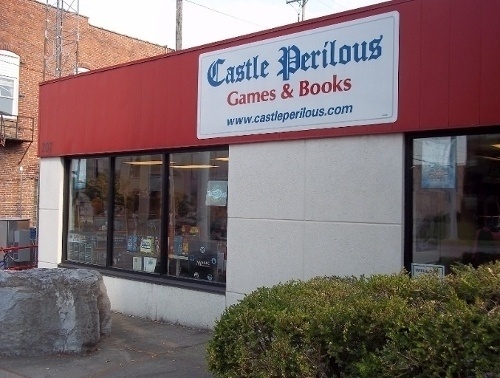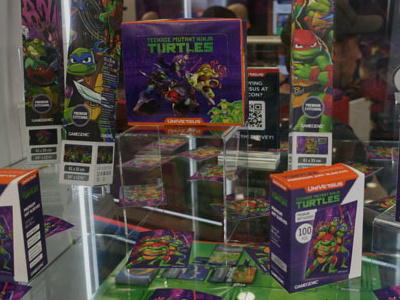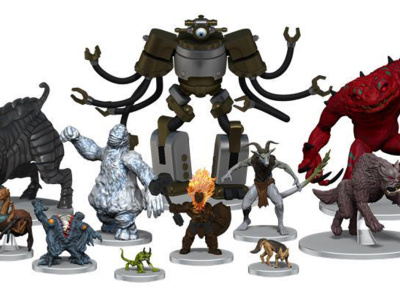Note: Thorne made changes to the first paragraph and added a response from Stonemaier below as of early a.m. April 16.
The latest thing to ruffle retailer feathers (an apt metaphor given the topic of the game) was the recent release of Wingspan from Stonemaier Games (see “Stonemaier Broadens Its ‘Wingspan’”), which got really good reviews and write-ups, including one in the New York Times. With a list price of $55 and heavy demand, stores got heavily allocated on the initial release around March 8 and restocks went immediately to back order. However, a second shipment of the game from the distributor supplying Amazon arrived around April 10, causing the price on Amazon to drop back to the normal price of $55. By the weekend, Amazon stocks had sold out and other secondary sellers pushed up the price, as of the writing of this column, to $115 (with copies on eBay going for $80 to $125). Still, for brick-and-mortar retailers the question was: Why did Wingspan go out of stock immediately through their regular distribution channels while Amazon—who also purchased the game through a distributor—had 1000+ copies in stock from April 10-12?
Why? Because once again the image gets reinforced that customers looking for a hot product should go to Amazon first, not the brick and mortar shop. We have had a few calls, not nearly as some stores in a more densely populated region, and we have had to tell them “Sorry, we sold out the first day. No I am afraid we do not know when we will get a restock,” with the response then “Oh well, guess I will check Amazon. Thanks anyway.” Now we have the halo effect kicking in, reinforcing the perception that has the hot games and has them in stock for far longer than the brick and mortar, or online store does(I checked a couple of notable online game retailers and they had sold out quickly as well). Meanwhile, the scarcity effect, as noted above, has pushed prices to more than double what Wingspan sold for on release. This same effect drove prices on Gloomhaven to well over $400 at the height of the frenzy for the game. This means that when restocks come available, retailers will have to be careful as to how many they order. If the promised restocks are small, the continued buzz about the game and the difficulty of getting a copy will keep demand and prices high, as with the first restocks of Gloomhaven and the initial printings of Betrayal At House on the Hill. If, however, Stonemaier actually prints enough to meet demand, including those stores that increased reorders far beyond what they actually expect to sell in order to play the allocation game, we could wind up with another Fallen Empires, with stores receiving dozens or hundreds of copies with dried up demand for the game
After the posting of original column, I received the following email from Stonemaier Games clarifying their distribution process and some changes they plan to make for the future:
“We sell to a bunch of hobby game distributors worldwide, and those distributors sell to online game stores and brick-and-mortar game stores. We also recently started selling to two nature-store distributors for Wingspan. In addition to that, we sell to a distributor that specifically focuses on selling to big non-hobby stores like Amazon, Walmart, Target, and Barnes & Noble. I learned fairly early on that it's better to have a partner we trust to work with those stores--particularly Amazon--rather than just selling to or through Amazon (or through anyone who e-mails me saying they are an Amazon distributor or retailer).
“The distributor who sells to Amazon does something called "dropshipping," which basically means as soon as they get our games, they can sell them to Amazon, and Amazon authorizes them to ship to Amazon's customers. Other distributors don't do that--that need to deliver to retailers, and retailers sell/ship games to customers.
“Our broker shipped all second-printing copies of Wingspan to distributors on the same day. However, because of the dropship method, the distributor was able to sell their games to Amazon, and Amazon authorized that distributor to ship the games directly to Amazon's customers. This happened for about 12 hours between April 10th and 11th (I think the distributor started with 1000 copies) and then again a few days later (for another 300 copies--that total matches the original amount we sent that distributor).
“So even though we shipped to all distributors at the same time, this unintentionally provided a competitive advantage to the distributor who sells to Amazon. Now that I know this, we'll add a freight shipping buffer for that distributor to put all retailers on level playing field.”
The opinions expressed in this column are solely those of the writer, and do not necessarily reflect the views of the editorial staff of ICv2.com.










